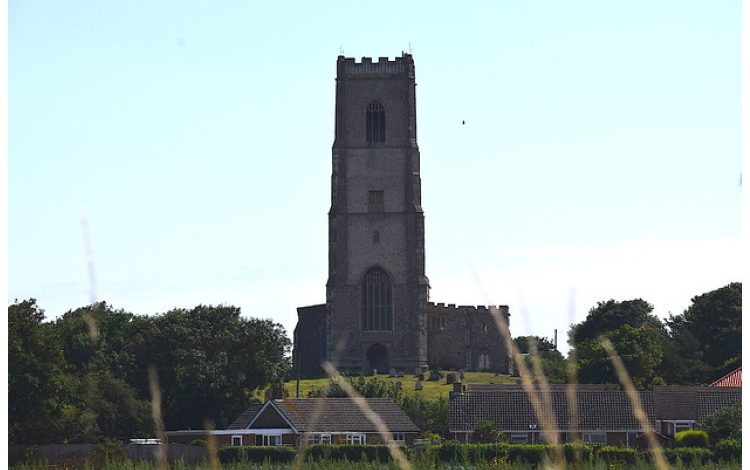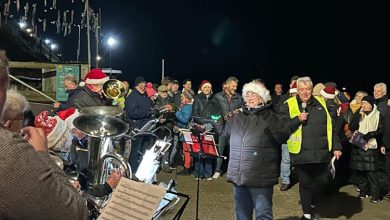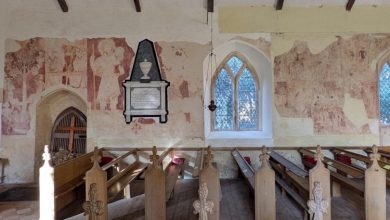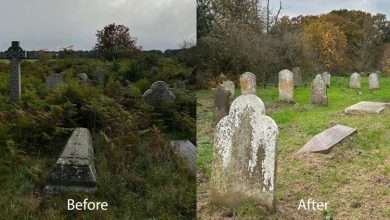Erosion threat to Happisburgh church graveyard

The small village of Happisburgh in North Norfolk is facing a heartbreaking dilemma as the coastal erosion threatens to destroy the graveyard of St Mary the Virgin church, where hundreds of bodies are buried. The cliffs are eroding at an alarming rate, with only 80 meters of land separating the churchyard from the retreating cliff edge. At this rate, the cemetery could be lost to the sea in less than 20 years, leaving the remains of loved ones at risk of being washed away. This devastating prospect has prompted the local authorities, including North Norfolk District Council, the Diocese of Norwich, and Happisburgh Parish Council, to consider the unthinkable: exhuming the bodies and relocating them to a safer location. The situation is a tragic reminder of the power of nature and the impermanence of even the most sacred of places.
The authorities are working closely with the government-backed Coastwise scheme, which aims to support coastal communities threatened by erosion. As part of this initiative, a report has been commissioned to investigate the relocation of bodies from cemeteries and graveyards at risk of being lost to the sea. Happisburgh is being treated as a test case, and the outcome will have significant implications for other coastal communities facing similar challenges. The Diocese of Norwich, which has responsibility for the site, is engaging with villagers and considering the first step of decommissioning the graveyard, which would mean no more burials can take place there. This decision is not taken lightly, as it would mark the end of a long-standing tradition and a significant part of the community’s history. The villagers are struggling to come to terms with the prospect of losing their beloved church and graveyard, which has been a part of their lives for generations.
The situation is further complicated by the presence of a mass grave for 119 sailors who died in one of Britain’s worst maritime disasters, the sinking of HMS Invincible in 1801. The ship, which was heading to join Nelson’s fleet before the Battle of Copenhagen, got stuck on the Hammond Knoll near Haisborough Sands and was sunk, resulting in the loss of 400 lives. The bodies that washed up on the shore were collected and taken to a mass grave on the north side of the church, where they remain to this day, marked by a memorial erected in 1998. The thought of disturbing the rest of these brave sailors is a daunting one, and the authorities are keen to find a solution that respects their memory and the sacrifice they made. The villagers are deeply concerned about the potential desecration of the graves and the impact it could have on the community’s sense of identity and heritage.
The threat of coastal erosion is not new to Happisburgh, and the village has already seen the devastating effects of the sea’s power. Nearby churches at Eccles and Dunwich, in Suffolk, have fallen victim to the shifting coastlines, leaving bodies exposed and communities heartbroken. The authorities are determined to avoid a similar fate for Happisburgh, where the church and graveyard have been a part of the community’s fabric for centuries. The villagers are coming together to find a solution, and the Diocese of Norwich is working closely with them to ensure that the memories and remains of their loved ones are treated with dignity and respect. The community is rallying around the church, with many residents attending meetings and sharing their concerns and ideas for preserving the graveyard and the church.
As the authorities grapple with the complex and emotional task of relocating the bodies, they are also considering the long-term implications for the community. The loss of the church and graveyard would not only be a tragic event but also a significant blow to the village’s sense of identity and heritage. The church has been a central part of the community for generations, and its loss would leave a gaping hole in the lives of the villagers. The Diocese of Norwich and the local authorities are committed to finding a solution that respects the memories and remains of those buried in the graveyard, while also preserving the community’s sense of history and tradition. The fate of the church and graveyard is a reminder of the importance of preserving our cultural heritage and the need to adapt to the challenges posed by climate change and coastal erosion.
The situation in Happisburgh serves as a poignant reminder of the human impact of coastal erosion and the importance of preserving our cultural heritage. As the village comes to terms with the potential loss of its beloved church and graveyard, it is clear that the decision will have far-reaching consequences for the community. The authorities, villagers, and the Diocese of Norwich are working together to find a solution that respects the memories and remains of those buried in the graveyard, while also preserving the community’s sense of history and tradition. It is a difficult and emotional task, but one that is necessary to ensure that the memories of those who have gone before us are treated with dignity and respect. The story of Happisburgh’s church and graveyard is a powerful reminder of the importance of community, heritage, and the human spirit, and it will undoubtedly resonate with people around the world who are facing similar challenges and struggles.









Thanks for sharing. I read many of your blog posts, cool, your blog is very good.